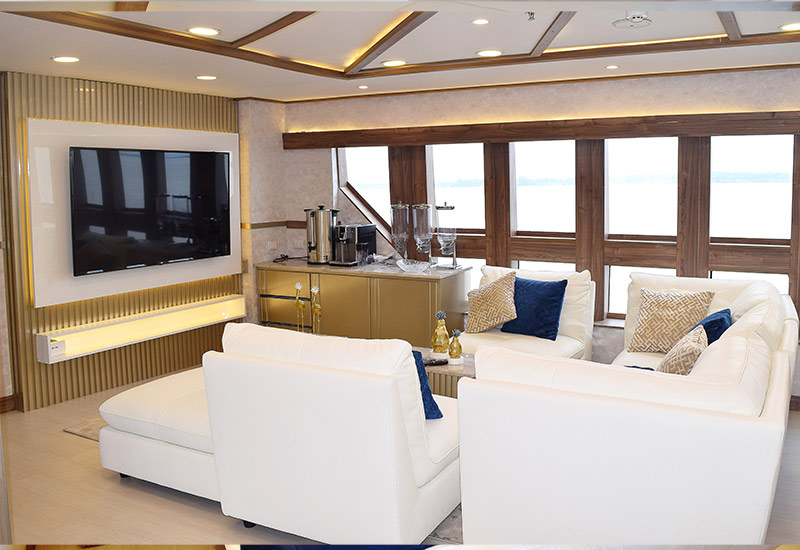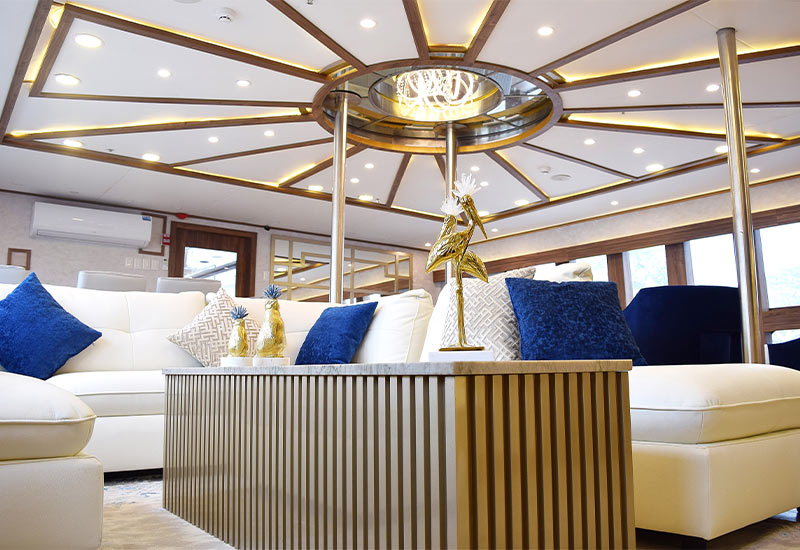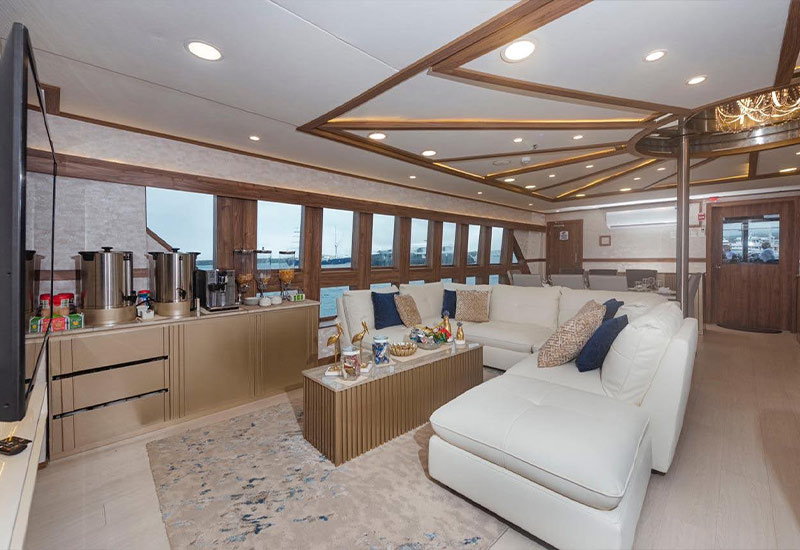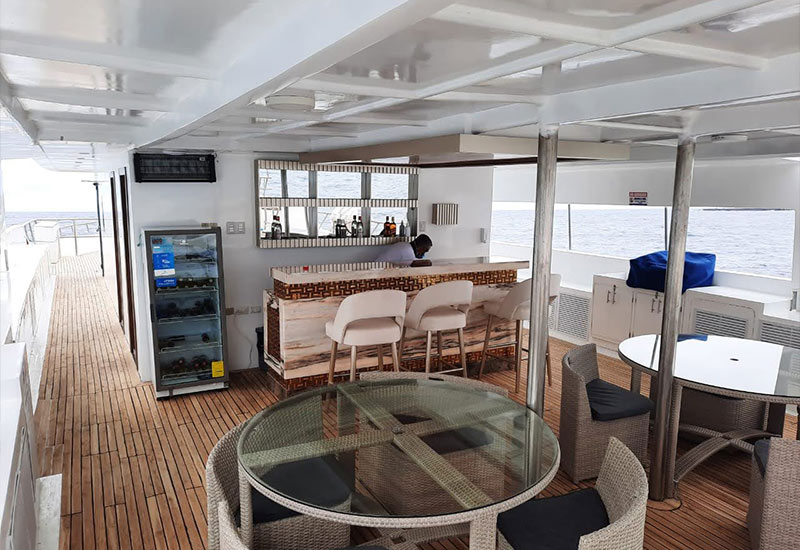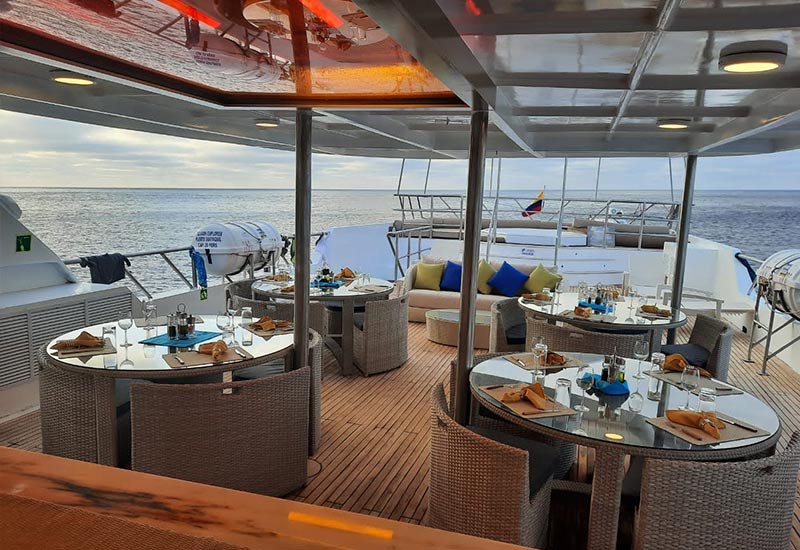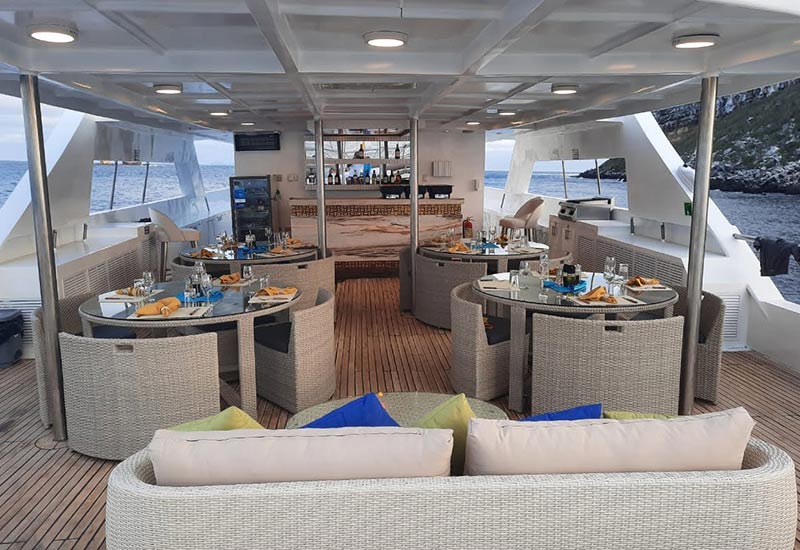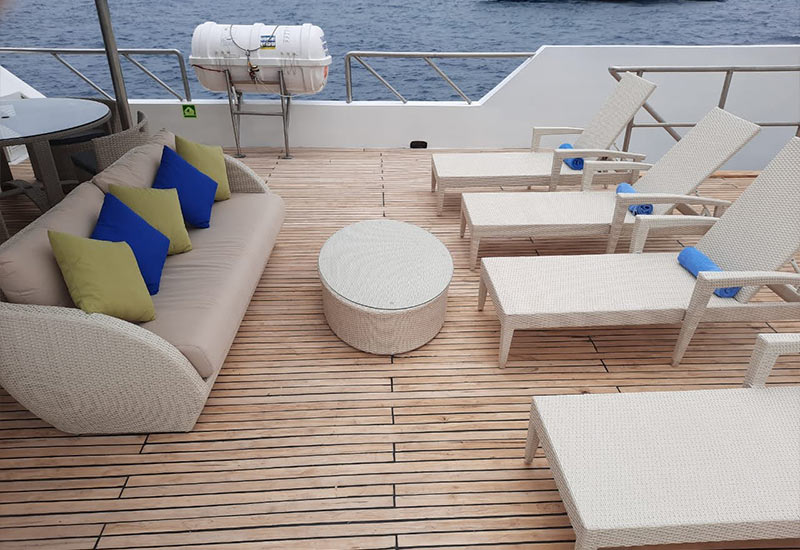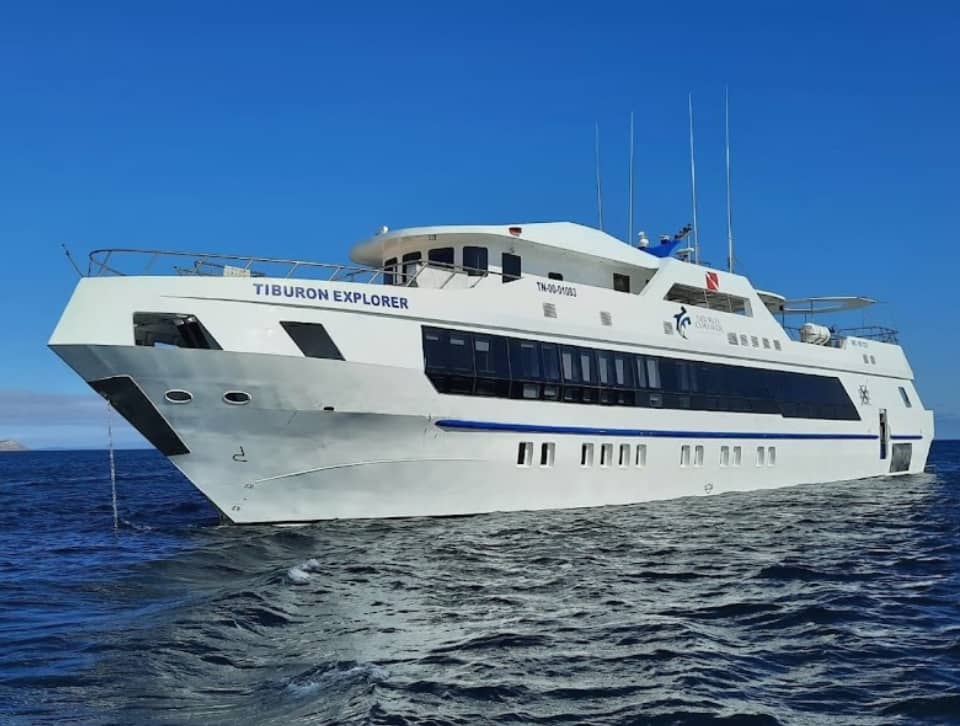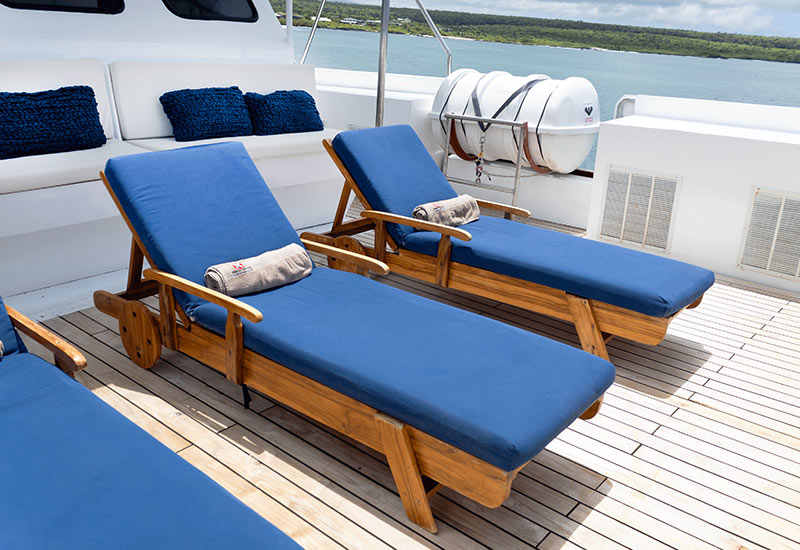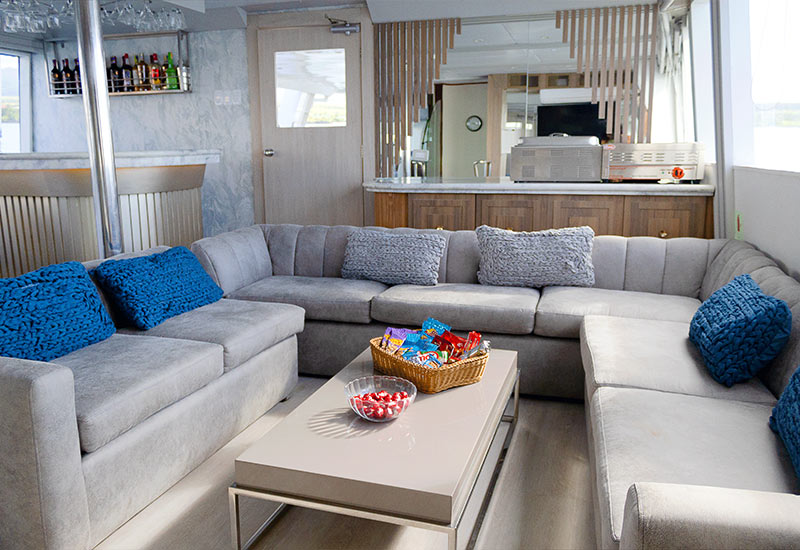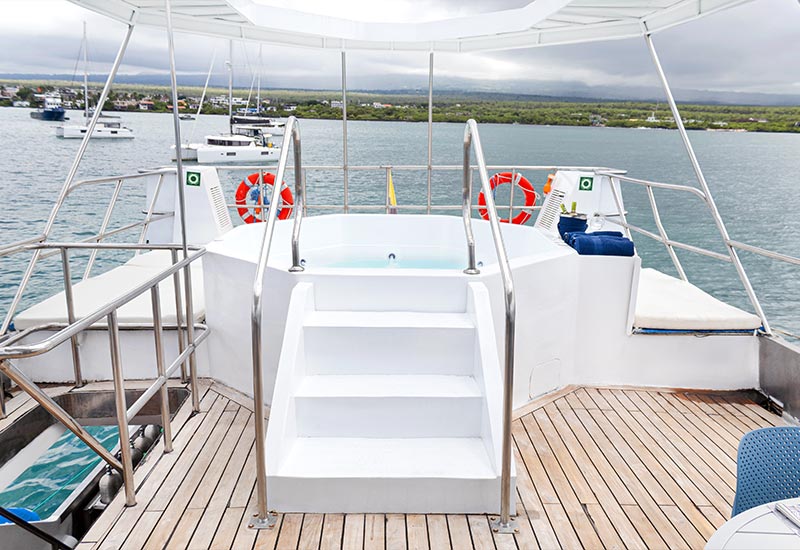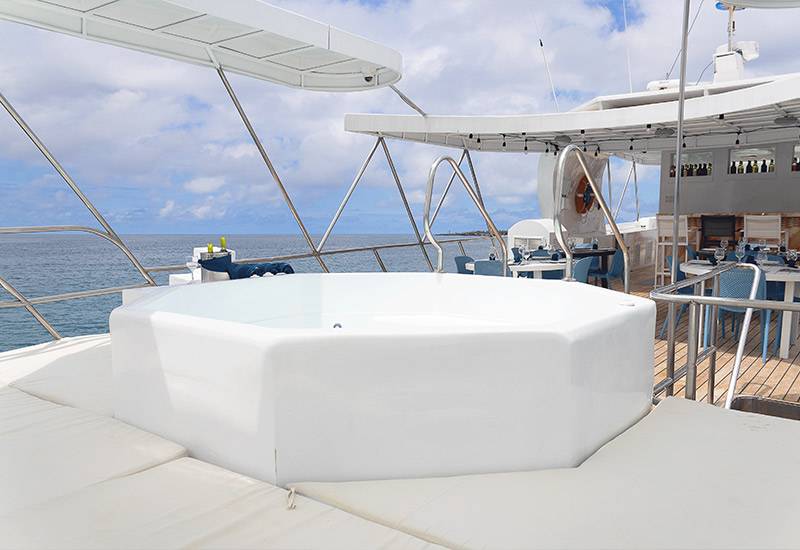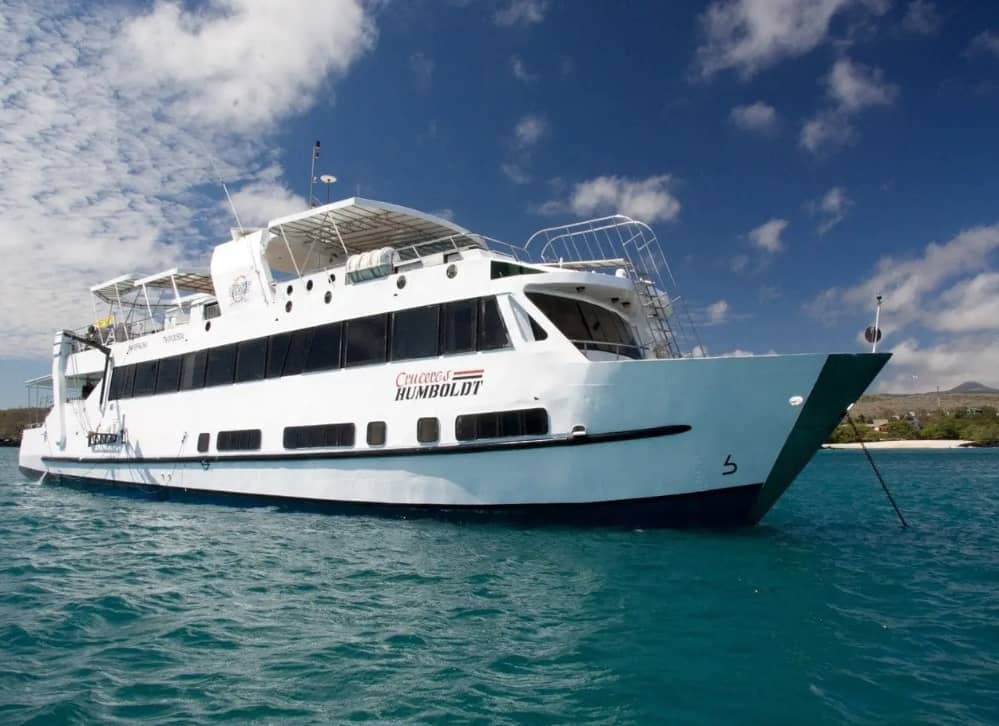The Ecuadorian government, for more than three decades, has declared its desire to conserve the natural resources of the archipelago through concrete actions of administration and management.
The Galapagos National Park Service works hand in hand with the Darwin Research Station implementingtheir common goals of conservation and preservations of the natural resources with the Galapagos National Park and Galapagos Marine Reserve.
The park service approves all itineraries of boats visiting the islands making sure that the tourism is distributed evenly throughout the islands. They also work as the licensing board for guides in the islands.
1. No plants, animals or remains of them such as bones, pieces of wood or other natural objects should be removed or disturbed. Such actions are illegal and may cause serious harm to the island’s ecological conditions.
2. Be careful not to transport any live material to the islands, or from island to island. Before landing on any of the islands, check your clothing for seeds or insects and destroy them or keep them on your vessel for disposal later on. Check your boots or shoe soles for dried mud before leaving the boat. This material will frequently contain seeds and spores of plants and animals. Inadvertent transport of these materials represents a special danger to Galapagos.
Each island has its own unique fauna and flora, and other plants and animals can quickly destroy this uniqueness. These rules apply to pets as well as other animals and plants. Do not bring them to the islands. One of the most destructive forces in Galapagos are feral organisms which have been brought to the Galapagos by man.
3. For the same reasons expressed in rule No.2 Do not take any food to the uninhabited islands. It is easy to introduce, together with food, insects or other organisms which might be dangerous to the fragile island ecosystems. Fresh fruits and vegetables are especially dangerous. The orange seed you drop may become a tree.
4. Animals may not be touched or handled. All wild animals dislike this and will quickly lose their remarkable tameness if thus treated by human beings.
5. Animals may not be fed. Not only can it be dangerous to your own person, but in the long run it can destroy the animal’s social structure and affect its reproduction. You carne here to see a completely natural situation. Do not interfere with it.
6. Do not disturb or chase any animal from its resting or nesting spot. Be very careful with breeding colonies of seabirds. Don’t drive boobies, cormorants, gulls or frigatebirds from their nests. These birds will fly from their nests if startled, often knocking the egg or chick to the ground, leaving it exposed to the sun.
7. Litter of all types must be kept off the islands. disposal at sea must be limited to certain types of garbage, only to be thrown overboard in selected areas. Keep all rubbish (film wrappers, cigarette butts, chewing gum, tincans, bottles, etc.) in a bag, to be disposed of on your boat. The crew of the vessel is responsible to the National Park for proper trash disposal. You should never throw anything overboard. A few examples of the damage that can be caused: sea lions will pick a tin can off the bottom and play with it, cutting their highly sensitive muzzles; sea turtles will eat plastic thrown overboard and die, for it blocks their digestive tract; rubbish thrown overboard near an island will usually be carried to shore where, as it accumulates, it will convert a once beautiful area into a rubbish pile, in addition to causing problems for the plants and animals.
8. Do not buy souvenirs or objects made from plants or animals of the islands, with the exception of articles made from wood. The best way to discourage this trade is simply not buying any of these articles. If anyone offers you any of these souvenirs, please advise the National Park.
9. Do not paint names or graffiti on rocks. It is against the law and is extremely ugly to look at. Immortality can’t be more important than the Islands’ natural beauty.
10. All groups which visit the national park must be accompanied by a qualified guide approved by the national park. The visitor must follow the instructions of the guide.
Beneath the calm surface, where the warm Panama Current meets the colder Humbolt and Cromwell currents, lies a unique and extremely diverse ecological system filled with fascinating marine life. Within this 133 000 square kilometer area, which is known as the Galapagos Marine Reserve, warm blooded and cold blooded inhabitants of the ocean enjoy a peaceful and protected existence. The need to protect this area was realized in 1990’s, as the marine life was being threatened by the unlimited and unlawful fishing methods that were being used. This endangered many species that call the coastline of Galapagos home. In 2001 this rare and amazing open water reserve was declared a World Heritage Site. The harvesting of sea cucumbers in areas surrounding the Galapagos Islands caught the attention of authorities, as hundreds were taken from the ocean for resale to Asian markets. Authorities recognized the need to protect all marine life and, in doing so, established the Galapagos Marine Reserve 1998.
The astonishing marine life that is found in the waters surrounding the Galapagos Islands includes hammerhead sharks, sword-fish, whale sharks, manta rays, leopard rays and whales. The turtles that frequent these waters, often found themselves injured or caught by fishing nets in the past. Before the marine reserve was founded, sharks were the targets of fishermen that hunted them exclusively for their fins. After the fins were removed, that rest of the shark was disposed of and this inhumane and uncontrolled fishing was depleting the predator population. Not only do they play an important role in the ecological system, but they are a huge attraction for tourists and divers. The large range of ocean life of Galapagos can be attributed to their location and surroundings. These waters have beautiful beaches, lagoons, endless rock sea beds, coral reefs, high cliffs and mangroves. All this attracts other marine animals, such as Marine Iguana, Waved Albatross, Sea Lions, Galapagos Penguins and Fur Seals. The spectacular festival of vibrantly colored fish is also a great attraction to divers.
With approximately 3 000 different species of marine and plant life at the Galapagos Marine Reserve, it is definitely one of the most popular attractions in Ecuador. The protection of the marine reserve is supported by the WildAid Foundation and the Charles Darwin Foundation. Tourist that are seeking an exciting adventure and who want to explore one of the most incomparable attractions in Ecuador can book boat cruises to experience the beautiful and wide variety of marine life that is waiting at the Galapagos Marine Reserve.
The Entrance Officer will give you a list of Galapagos National Park Rules. With an increasing number of tourists visiting the Galapagos Islands each year, it be comes a matter of extreme importance that you not only follow these rules, but that you set an example for others, showing that tourists can be conservation-minded.
There are those that look at the expansion of tourism as a double-edged sword, feeling that the delicate natural order of the archipelago will be adversely affected by the very visitors who want to experience this special place on earth. Man does not have a very good track record in the Galapagos; it won’t take much in the way of insensitive behavior on the part of a few to result in the outraged cries of «enough.»
The Galapagos Islands remain well preserved as a natural environment in large part due to the National Park Rules. These rules are established by the Galapagos National Park Service, and enforced by park wardens and trained guides.


